I had the honor of teaching a small 2nd grade group of students a guided writing lesson after we had done a guided reading lesson with an excerpt from an A to Z text, George Washington Carver, Level O. In a previous post, I wrote about the first lesson – close reading of an excerpt from this text. In the second lesson (about 25 minutes), I guided the students in using the key words they’d identified during guided reading to write a response to the text-dependent question, “What did Carver achieve?” Below are some of the words we’d written together while reading and thinking about how to answer this question. The students also had their own set of sticky notes to work from while writing.
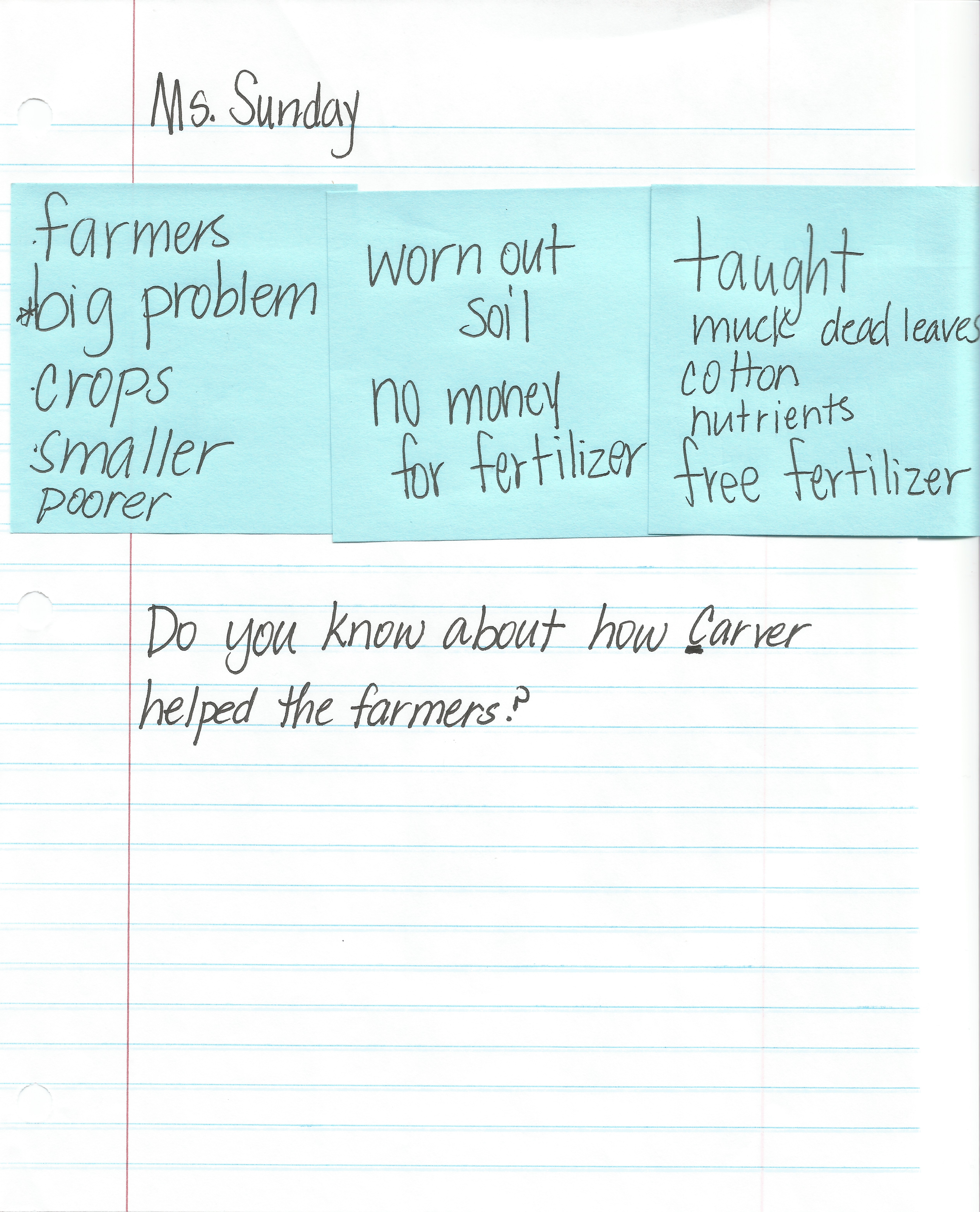
In the image above – you see the key words we generated together (after a shared reading and discussion on Day 1) on sticky note #1. On sticky notes #2 & 3, the key words were generated by individual students and shared when we regrouped after they read independently (still as part of Day 1). You’ll notice that I just picked a few that they shared to write on our common sticky note and that some of the students wrote additional words as you’ll see in the images of their own lists below.
We began by orally rehearsing how we would respond using the key words on our sticky notes. I coached one student in using the key words to create sentences (all orally) in response the question. Then I asked partners to turn and share how they would answer the question using their key words.
Then we regrouped and decided how to start our written response. One student suggested, “Do you know how Carver helped the farmers?” I wrote this on my piece of paper for all students to see and then encouraged them to use this student’s introduction or to write their own. You’ll notice in the examples below, they ALL wrote that intro. Totally okay, but in another lesson we might focus on different ways to start. (See previous image.)
As each student finished writing the introduction, I asked the student to think about what we had done several times–we’d created a “next” sentence using the key words on the first sticky note. Because they had done this aloud several times – in the group, with me individually or with a partner, the bridge to writing seemed easier to cross. For a few students, I asked them to orally rehearse what they would write before writing; for other, more capable writers, I asked them to start.
Then they took off working more independently and I coached at the point of need. One student finished her first sentence and stopped and waited for me–this would become a teaching point, “How can you continue? What will you do after you write this next sentence?” Another student knew exactly what to do and kept writing, referring to the key words on her sticky note for help.
I started a conference with students by asking them to read what they’d written so far. This is always a good opportunity for students to realize they’ve made a mistake – omitted a word, or written something incorrectly and, frequently, they will correct or revise immediately. It’s also a good opportunity for me to say, “Did that sound right?” or “Does that make sense?” or “What is the tricky part in this sentence?” Then we conferred to problem-solve. For some – there are a lot of grammatical or spelling issues – I do not try to solve all of these at once because I don’t want to overwhelm the child. I target a 1-2 issues that I think the student would benefit from having some one-to-one help.
Here are a few examples of what the students (3 out of 5–ouch! I didn’t get to collect them all :() wrote.
Student #1
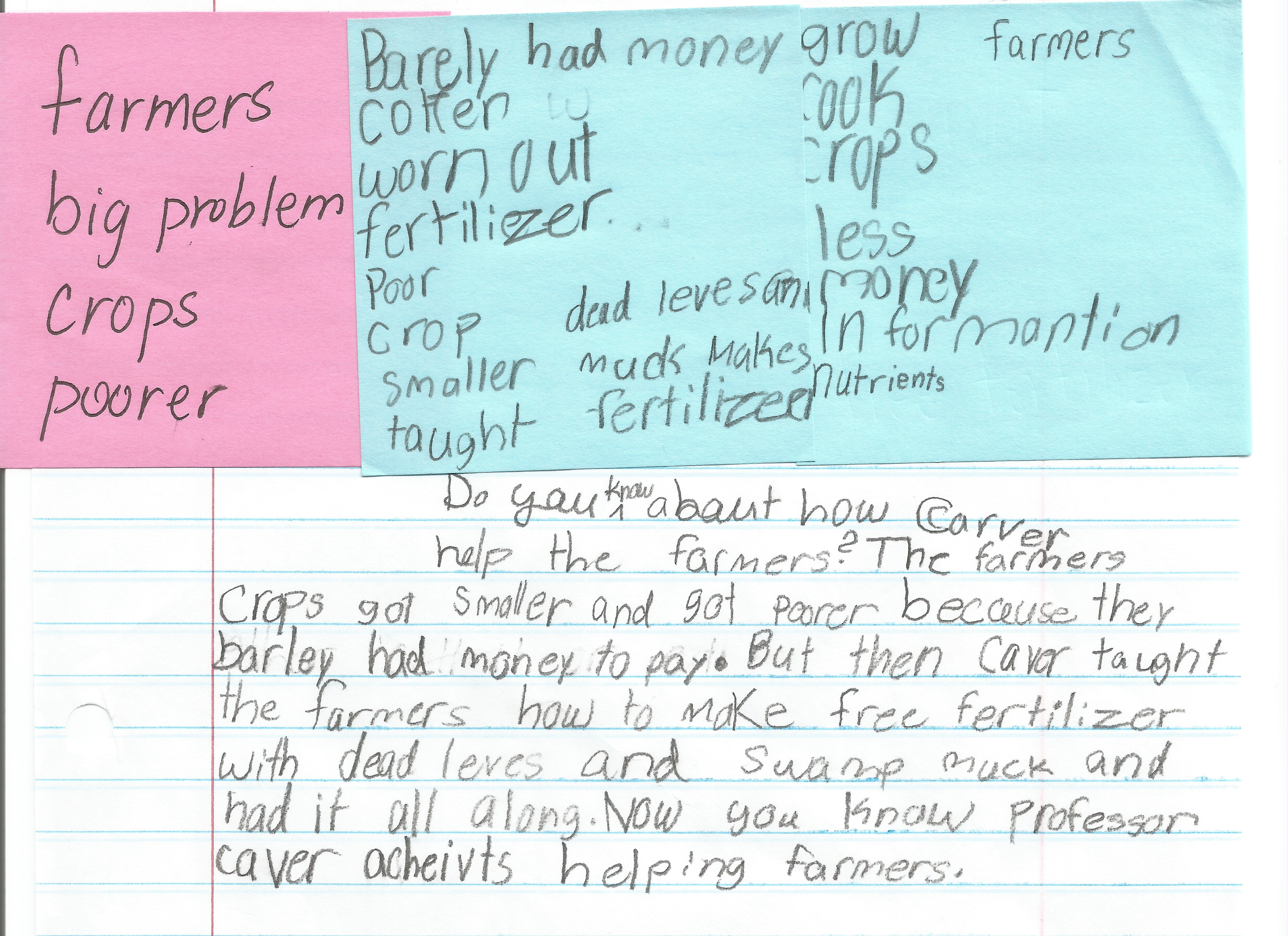
(Note: Before the guided writing lesson, I rewrote the key words that we’d generated together in lesson 1 on a sticky note for each child; their key words were from the 2nd & 3rd paragraph of the shared reading and I wanted them all to have the whole list.)
My thoughts (keeping in mind, I only worked with this child for a short period!!!) –
- The student is assuming that you, the reader, will understand that if the crops are smaller, there is less to sell and therefore the farmers, as stated in the response, “barely had money to pay [for food, etc.].” Still the student is grappling with some difficult content (given her age of 7-8) and she seems to have some grasp of the idea being conveyed.
- She uses connective language – “but then” to share her logic! BRAVO!
- She wraps up her response –she’s clearly mastered the formula of starting with a question and ending with “now you know.”
Implications for teaching –
- She would benefit from reading more (developmentally appropriate) texts about crops and the economics of farming and how Carver helped the farmers–so she could increase her grasp conceptually. This is hard to do – but makes the case for working with text sets and reading across multiple texts on the same topic.
- She needs to develop stamina for writing longer pieces–now I only know about her from these two lessons, but she had several key words describing what else Carver did to help the farmers and she did not extend her writing to include these.
- She’s ready for a broader repertoire of options for beginning and ending responses–even creating some of her own with her audience in mind.
- “farmers crops” vs. “farmers’ crops” – This might be a quick mini-lesson as part of guided reading/writing along the way.
Student #2
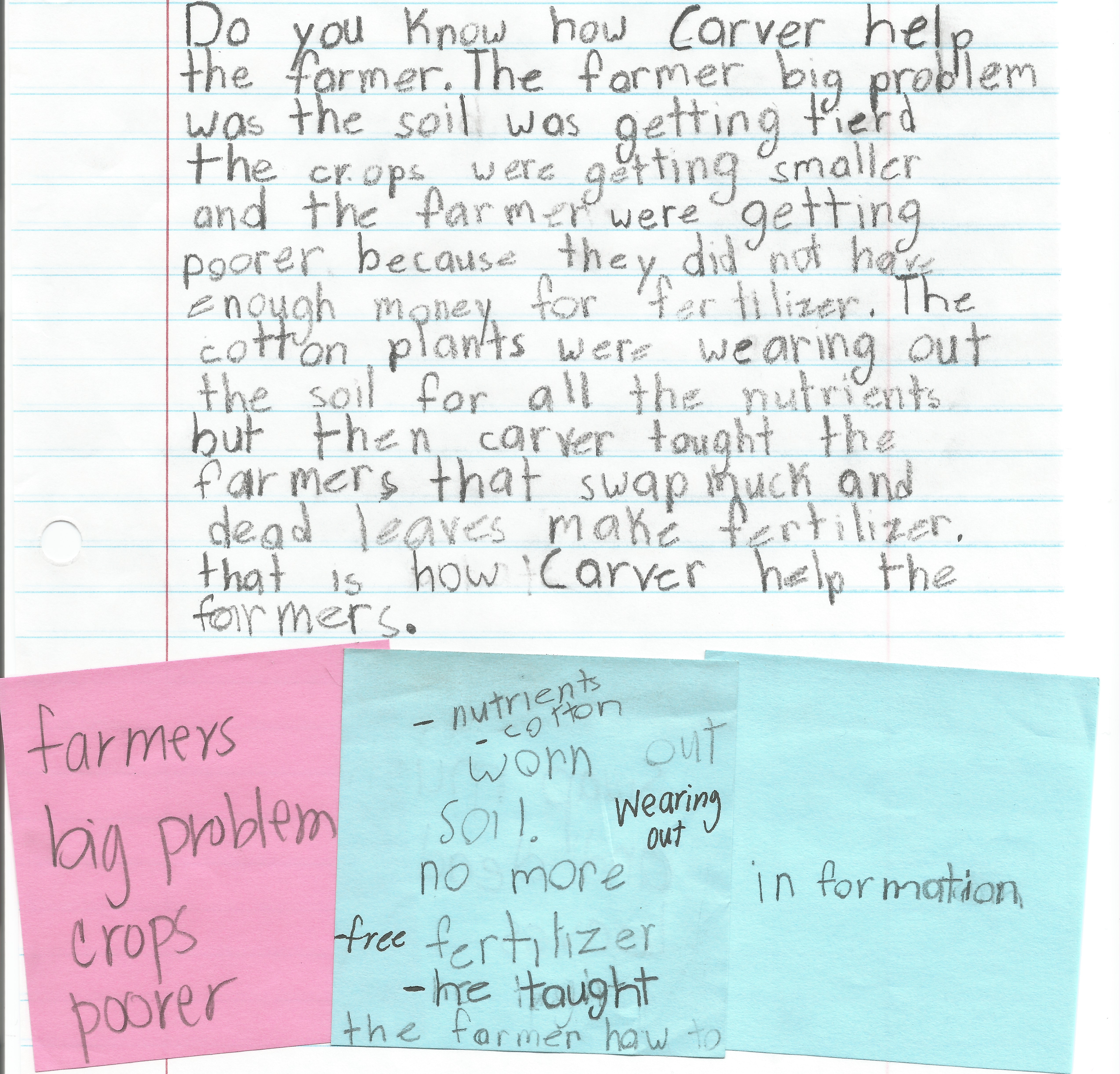
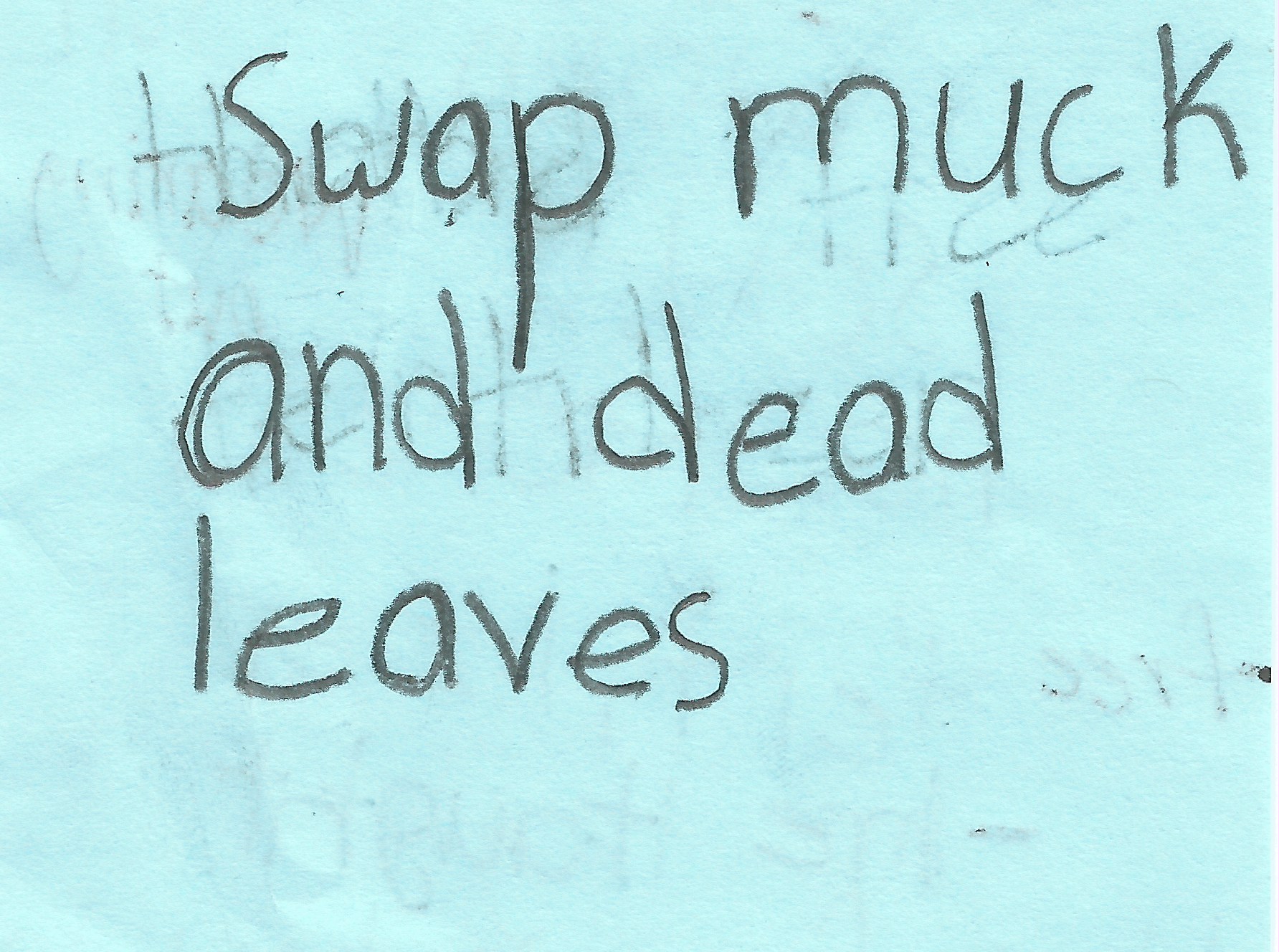
(Note: You’ll notice my handwriting in black ink on the sticky notes. This was done during Day 1 conferences with this student. To help him articulate his thinking, I was the scribe!)
Notice how this student is a little more savvy in expressing what he understand–“the soil was getting tired”; even though he doesn’t entirely grasp the idea of nutrients in the soil, he gives explaining this concept a try. Kudos to him, you know? Again, I think the difference would be the opportunity to read multiple texts on the same topic.
Student #3
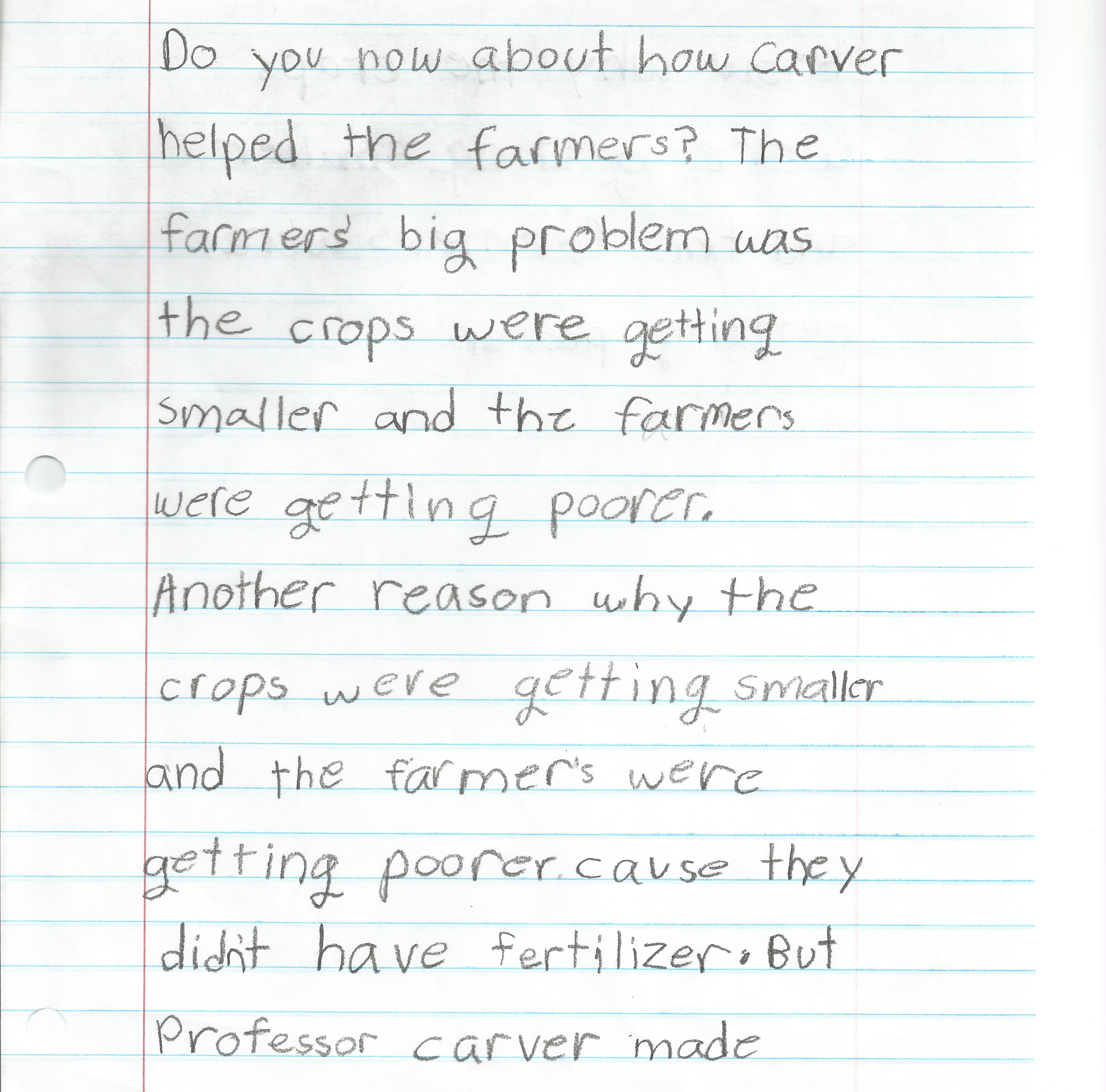
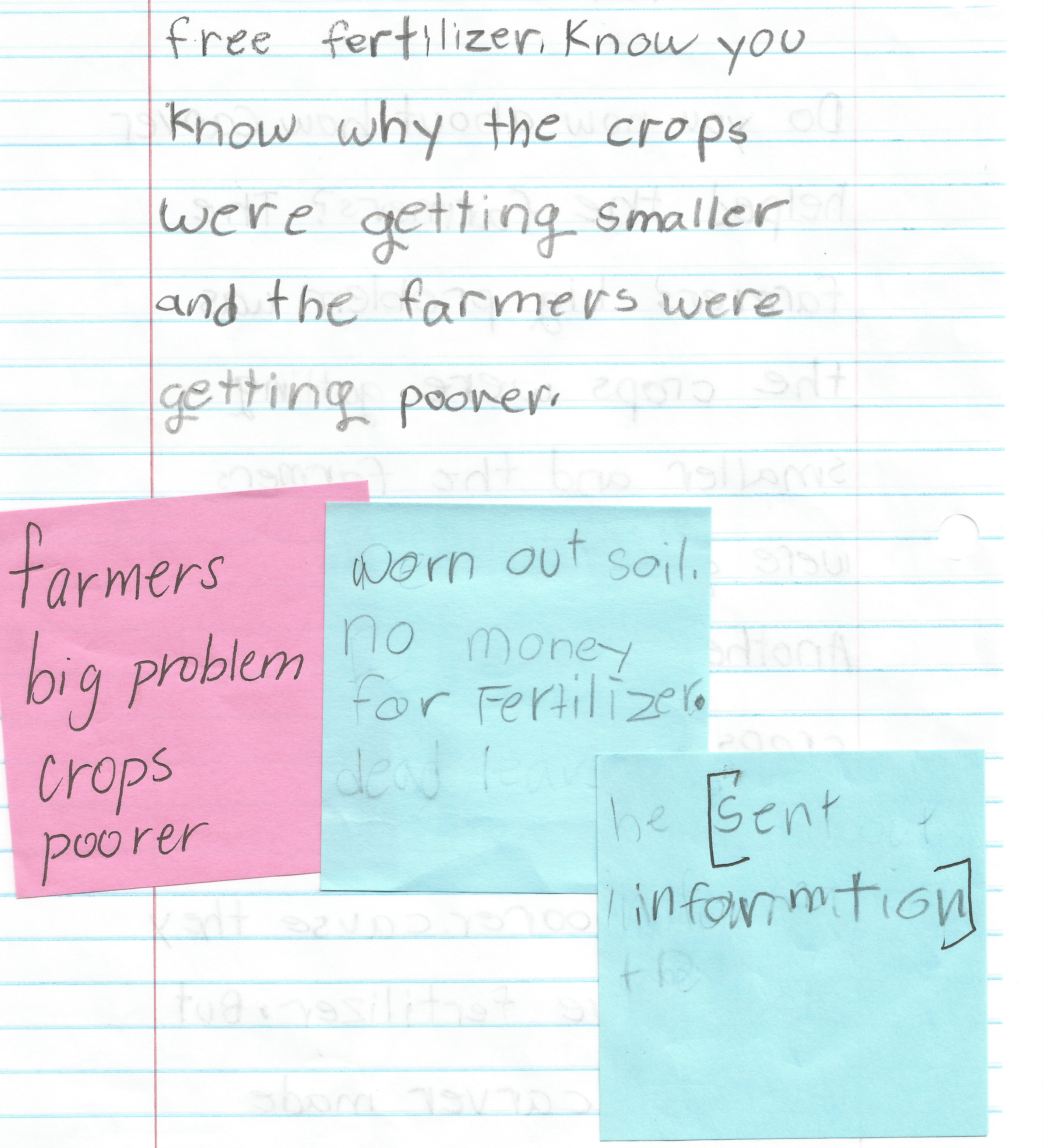
This student seems to sort of understand what we were reading and discussing. She’s working really hard to create a coherent response, strategically using the connective “another reason” and wrapping up with “now you know why.” Again – she’s dealing with a difficult concept–it’s not that this is getting in the way, it’s that the student is grappling and needs continuous opportunities with just the right support. And you know what I’m going to say next? She needs more time with this concept, this idea of farmers struggling in the late 19th century and people like Carver coming to their aid or, maybe more appropriately, just what it means to farm and grow and sell crops.
One of my colleagues who observed this lesson, said, “It was a productive struggle for them.” YES!!! Love this term for what the students were experiencing. Here’s a quote from an educator, , I found describing this term —
Students can experience productive struggle when given a task slightly beyond their abilities. As educators provide support for tackling a challenging problem through different approaches, they can help build critical thinking skills and develop grit. The objective isn’t necessarily to get to the right answer, but to engage in this process to advance learning and develop perseverance.
The trick is–
- to engage these students in this kind of learning on a regular basis,
- to support them just at their point of need –
- through discussion,
- through trying to compose sentences orally first,
- through opportunities to write and even sketch and act out as they grapple with a difficult concept,
- AND through the use of text sets or multiple texts on the same concepts,
- AND to gradually release so that they are doing more of this reading, writing, and thinking on their own.
Okay…hope this helps.
S
